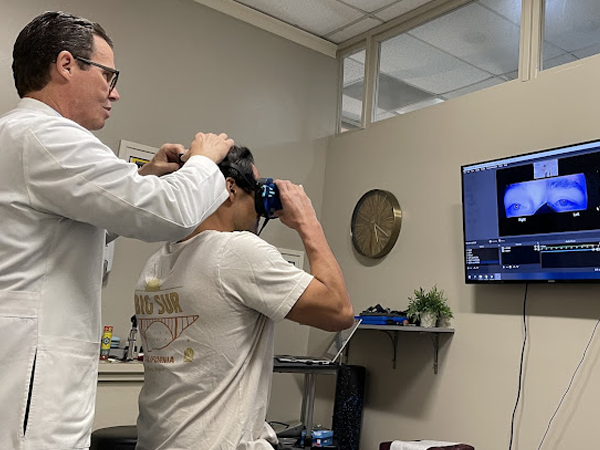
Mood disorders are a group of mental health conditions characterized by persistent and severe disturbances in an individual's emotional state. These disorders can significantly impact various aspects of life, including relationships, work, and overall well-being. However, with proper understanding, diagnosis, and treatment, individuals can effectively manage their symptoms and regain control over their emotional well-being.
Common Mood Disorders
There are several types of mood disorders, each with its own set of symptoms and characteristics. Here are some of the most common ones:
- Major Depressive Disorder (MDD): Characterized by persistent feelings of sadness, hopelessness, and a lack of interest or pleasure in activities once enjoyed. Individuals with MDD may also experience changes in appetite, sleep patterns, energy levels, and difficulty concentrating.
- Bipolar Disorder: Involves alternating periods of mania (elevated mood, increased energy, and impulsivity) and depression. During manic episodes, individuals may experience racing thoughts, grandiose ideas, and decreased need for sleep.
- Persistent Depressive Disorder (Dysthymia): A chronic form of depression that lasts for at least two years. Symptoms are milder than those of major depression but can still significantly impact an individual's quality of life.
- Seasonal Affective Disorder (SAD): A type of depression that occurs during specific times of the year, typically in the winter months when there is less exposure to natural sunlight.
It's important to note that mood disorders can co-occur with other mental health conditions, such as anxiety disorders or substance abuse disorders, making proper diagnosis and treatment even more crucial.
Helpful Treatment for Mood Disorders
While traditional treatments for mood disorders, such as psychotherapy and medication, can be effective, some individuals may benefit from alternative or complementary approaches. Brain mapping and neurofeedback are two such techniques that have gained increasing attention in recent years.
Brain mapping is a non-invasive technique that involves recording and analyzing the electrical activity of the brain using electroencephalography (EEG). This process helps identify any imbalances or abnormalities in brain wave patterns that may be contributing to mood disorders.
During a brain mapping session, electrodes are placed on the scalp to measure the brain's electrical activity. The data collected is then processed and displayed in the form of a brain map, which provides a visual representation of the brain's functioning.
By identifying areas of the brain that are over- or under-activated, brain mapping can help healthcare professionals develop targeted treatment plans tailored to an individual's specific brain activity patterns.
Understanding Neurofeedback
Neurofeedback is a non-invasive therapy that trains the brain to self-regulate its own activity patterns. It involves using real-time feedback from brain wave measurements to teach individuals how to modify their brain activity in a desired direction.
During a neurofeedback session, individuals are connected to an EEG machine that monitors their brain waves. They are then presented with visual or auditory feedback, such as a video game or sound, that responds to their brain activity in real-time. By learning to control the feedback, individuals can gradually train their brains to achieve more balanced and desirable brain wave patterns.
Neurofeedback has been found to be particularly effective in treating mood disorders, as it can help regulate the brain regions and neural networks involved in emotional processing and mood regulation.
Benefits of Brain Mapping and Neurofeedback
Brain mapping and neurofeedback offer several potential benefits for individuals with mood disorders:
- Personalized Treatment: By providing detailed information about an individual's unique brain activity patterns, brain mapping allows for the development of highly personalized treatment plans.
- Non-invasive and Drug-free: Both brain mapping and neurofeedback are non-invasive techniques that do not involve the use of medications or surgical interventions, making them appealing options for those seeking alternative or complementary therapies.
- Improved Emotional Regulation: Neurofeedback can help individuals better regulate their emotions by training the brain to achieve more balanced and desirable brain wave patterns associated with improved mood and emotional stability.
- Increased Self-awareness: Through the process of neurofeedback, individuals can develop greater self-awareness and understanding of their brain's functioning, empowering them to take an active role in their treatment and recovery.
- Reduced Medication Reliance: For some individuals, brain mapping and neurofeedback may help reduce the need for or dosage of medication, potentially minimizing side effects and dependency concerns.
Navigating Mood Disorders with Help of Bagnell Brain Center
Mood disorders are complex and often debilitating conditions that can significantly impact an individual's quality of life. Brain mapping and neurofeedback are innovative techniques that offer a personalized and non-invasive approach to treating mood disorders. By providing insights into an individual's unique brain activity patterns and training the brain to self-regulate, these therapies can complement traditional treatments and enhance overall outcomes.
If you or someone you know is struggling with mood disorders, we encourage you to seek professional help. Our team of experienced health professionals offer comprehensive services, including brain mapping, neurofeedback, and other evidence-based therapies. Visit Bagnell Brain Center at our office in Pinecrest, Florida, or call (305) 889-7488 to book an appointment today.






